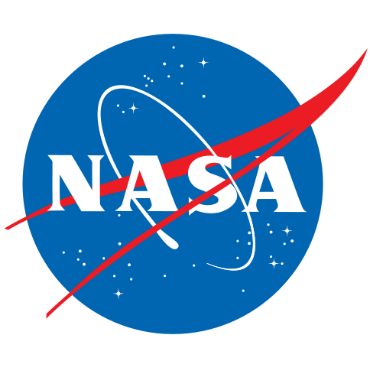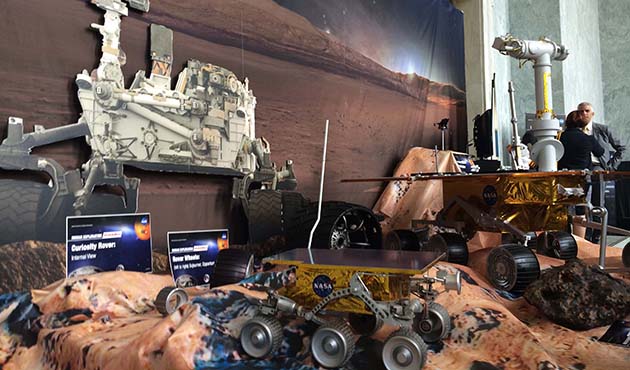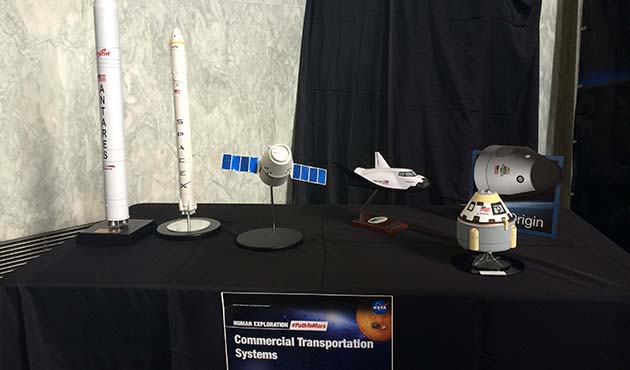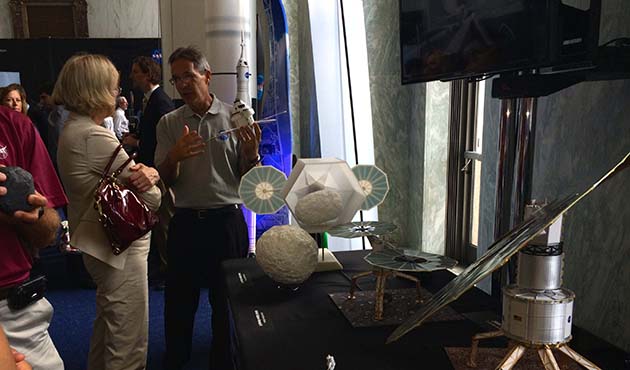The technology taking NASA to Mars

The space agency showcases some of its innovations, big and small.

Whether mankind returns to Mars by 2030 is more of a political than technological question at this point -- the politics may be far from settled, but the technology is subject to significantly less debate.
"We have the technology, we have the capability," said Christina Richey, a contract program officer at NASA. "We just have to have the will."
Getting to Mars has been a cornerstone of the NASA mission since the first fly-by attempt of Mariner 3 almost 50 years ago. That first mission failed, but just three weeks later NASA successfully sent Mariner 4 on an eight-month voyage to Mars.
That was in 1964, the heyday of the space program, when the Moon was in sight and anything seemed possible. Then, NASA consumed 4.6 percent of the federal budget. Today it's less than 0.5 percent, which means the agency must find ways to get more technological bang for its buck.
To date, satellites and rovers have been the only machines to orbit or land on the planet. Five decades on from Mariner and a decade after President George W. Bush proposed returning to the Moon by 2020 as a steppingstone for a mission to Mars, NASA is showcasing some of the gadgets it hopes to use to send astronauts on the first manned interplanetary spaceflight. FCW recently took a behind the scenes look at NASA's "Human Exploration Day on the Hill: Path to Mars," and got a glimpse at the latest technology designed to take Americans to Mars and tap into the planet's resources for future use.

(Photo: Colby Hochmuth)
The goal to get humans to Mars by 2030 is massive both in the grandeur of the notion and the physical challenge it presents. Reaching the goal will require a massive industrial undertaking. The Michoud assembly facility in Louisiana, one of the largest in the country, spreads across 43 acres and is the construction site for the program's 321-foot, 5.5 million pound rocket and other mission hardware.
But size isn't everything.
A major factor in determining NASA's ability to make it to Mars is radiation levels. NASA has developed thumbnail-sized sensors to provide a mobile component to radiation detection.
The sensor is put on a USB drive and then onto astronaut's' computers to detect radiation, or applied directly onto space suits so astronauts can detect radiation throughout their work process. Prior to the small sensor, radiation detection was done through a shoebox-sized box mounted on the wall of a spacecraft.
NASA is packaging these sensors, and testing them on Orion, the planned vehicle for the human exploration of Mars, according to Jason Crusan, director of the Advanced Exploration Systems Division for the Human Explorations and Operations Mission Directorate.
"The surest path to Mars is through technology," Crusan said.
Bandwidth has also been a hurdle for the agency. While the technology exists to transmit photos and videos from Mars to Earth, most of the data collected by craft such as the Curiosity rover remains stored there.

(Photo: Colby Hochmuth)
To address this problem, NASA has been focusing on expanding laser communications, according to Michael Gazarik, associate administrator for the Space Technology Mission Directorate. The first live test is planned for 2017 -- but it will have to ride on someone else's commercial spacecraft.
While NASA has become an unmanned spaceflight agency since the retirement of the last space shuttle, scientific missions have continued. Those flights provide knowledge about both space and systems that will prove invaluable in getting humans to Mars.

(Photo: Colby Hochmuth)
Asteroids are thought by many of NASA's space-whizzes to be stepping-stones to the fourth planet. NASA's asteroid challenge and the asteroid redirect mission have been catalysts in generating interest by the public and in engaging private-sector companies in developing new methods for capturing and redirecting asteroids.
"Getting to Mars would be a sweet spot for mankind," Crusan said. "The technology is good for NASA, and it's good for everyone."
NEXT STORY: Intel Folks Want to Mimic Brain Circuits


